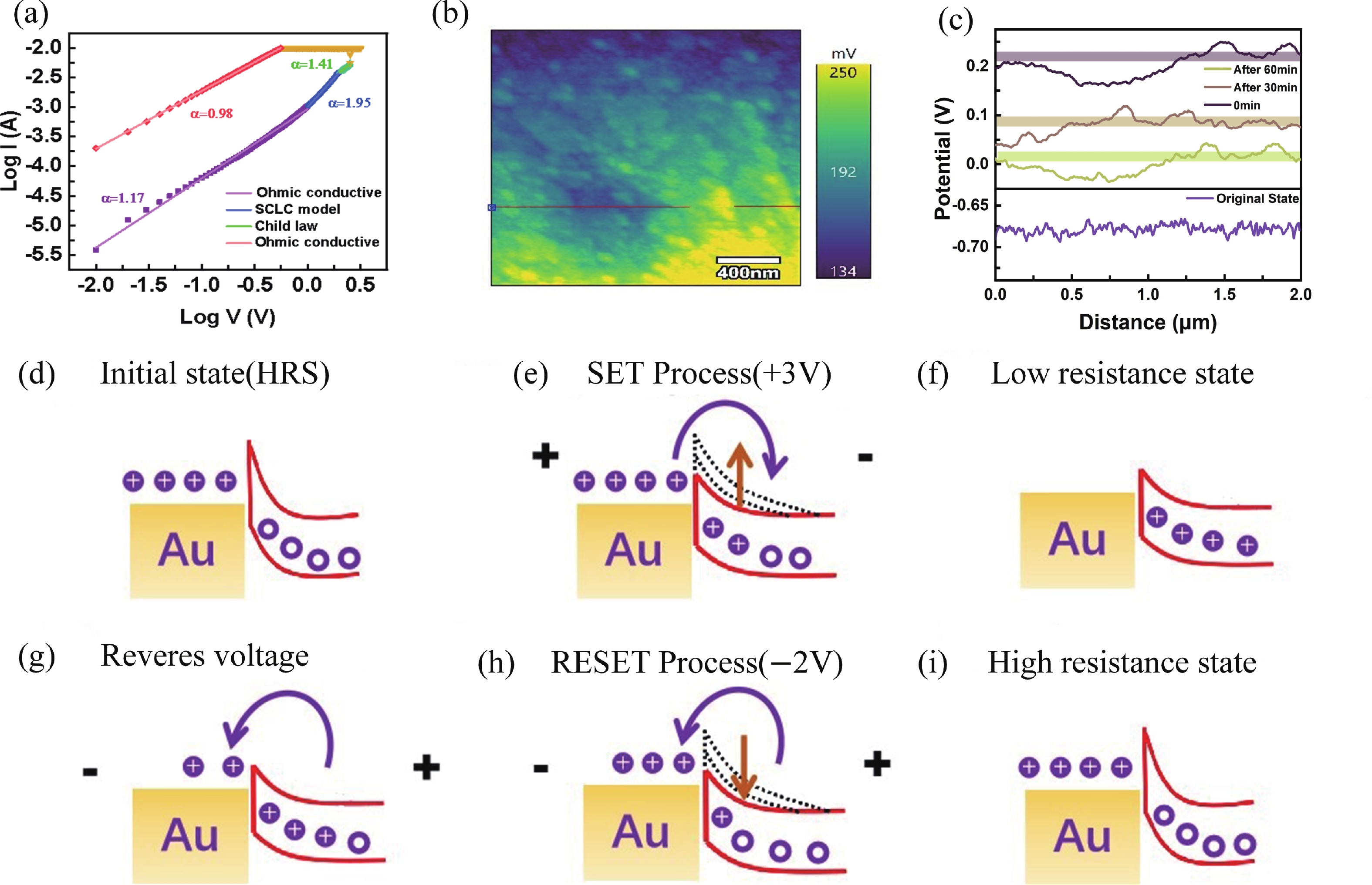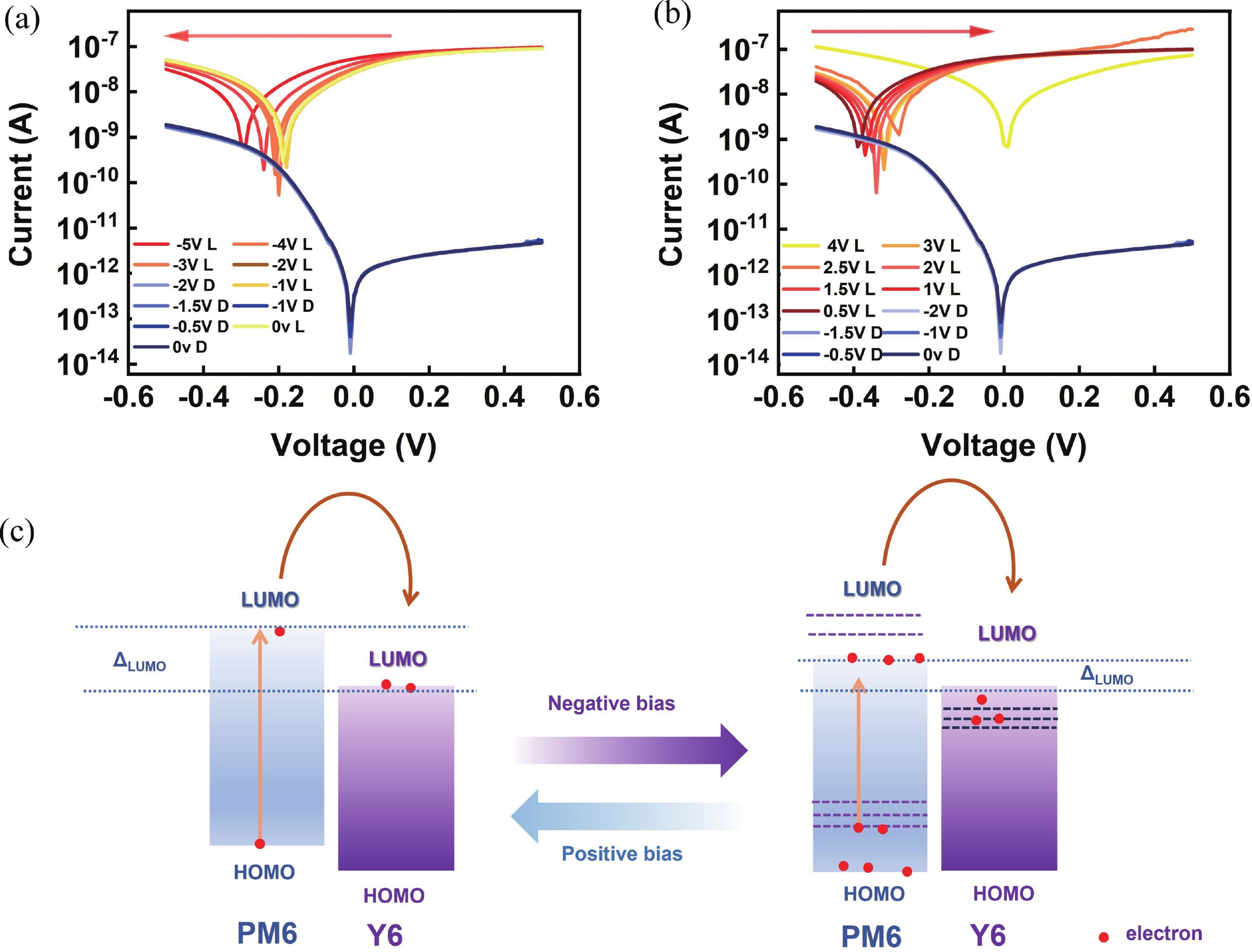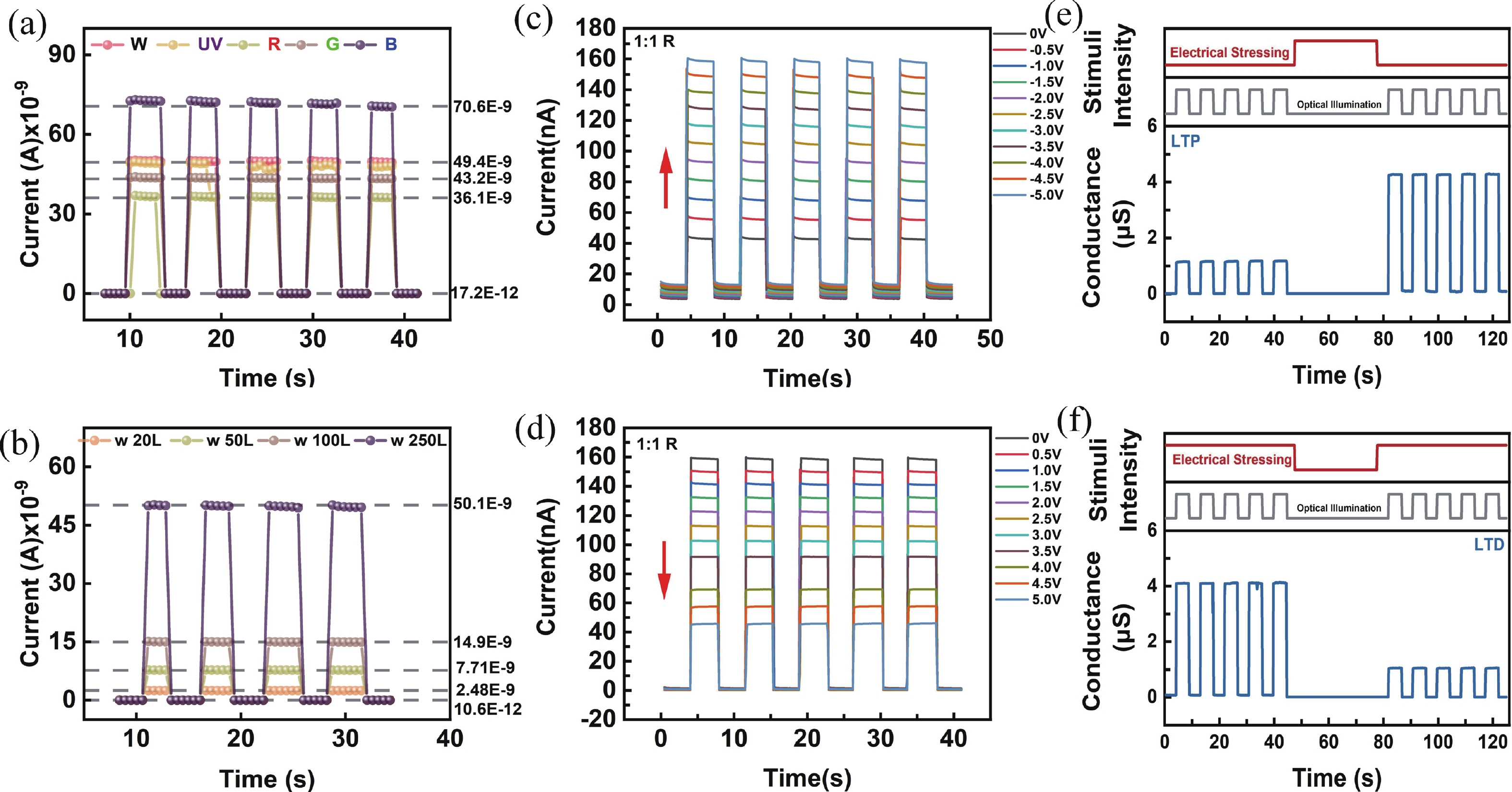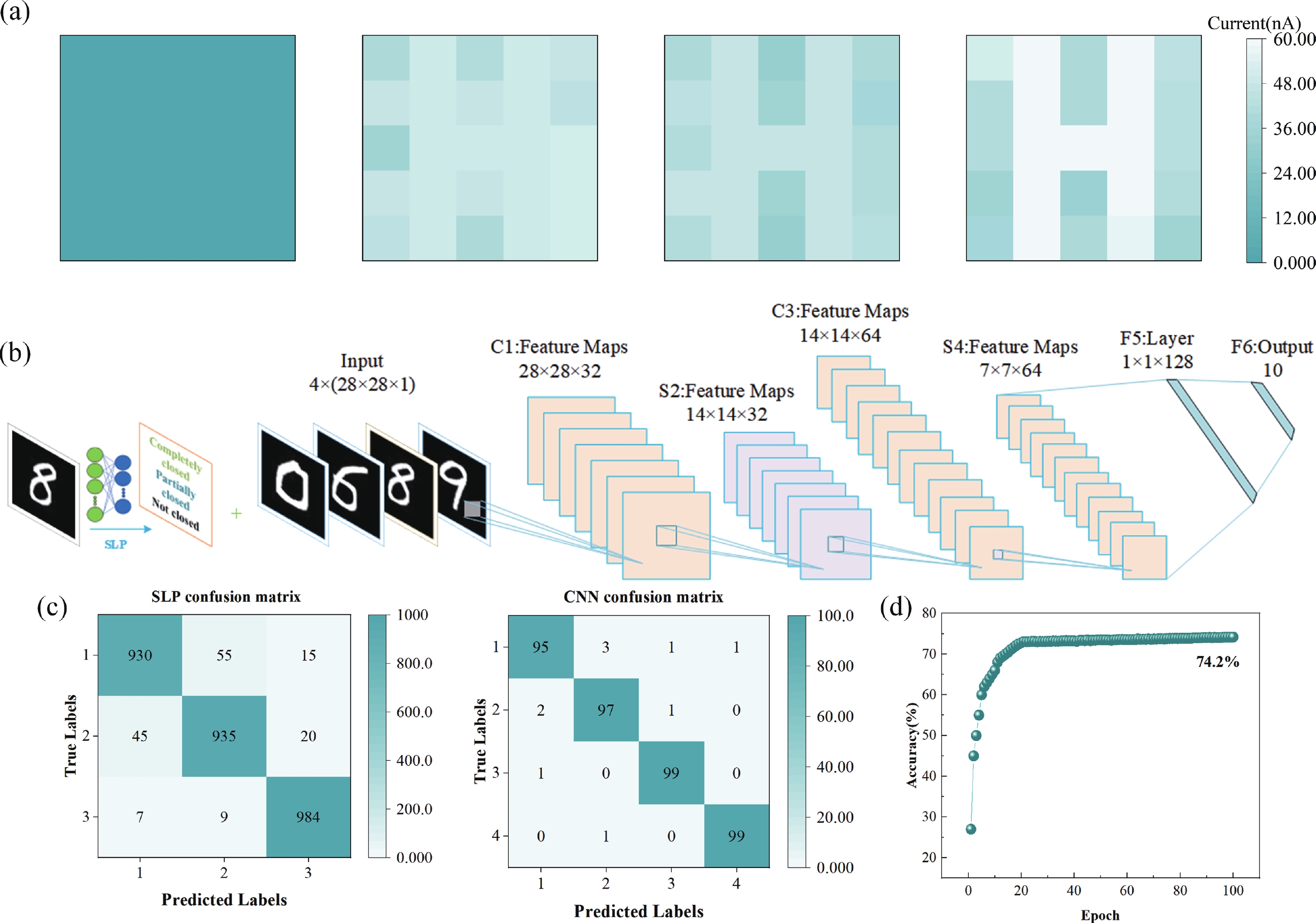| Citation: |
Xiangrong Pu, Fan Shu, Qifan Wang, Gang Liu, Zhang Zhang. Visual synapse based on reconfigurable organic photovoltaic cell[J]. Journal of Semiconductors, 2025, 46(2): 022403. doi: 10.1088/1674-4926/24080018
****
X R Pu, F Shu, Q F Wang, G Liu, and Z Zhang, Visual synapse based on reconfigurable organic photovoltaic cell[J]. J. Semicond., 2025, 46(2), 022403 doi: 10.1088/1674-4926/24080018
|
Visual synapse based on reconfigurable organic photovoltaic cell
DOI: 10.1088/1674-4926/24080018
CSTR: 32376.14.1674-4926.24080018
More Information-
Abstract
The hierarchical and coordinated processing of visual information by the brain demonstrates its superior ability to minimize energy consumption and maximize signal transmission efficiency. Therefore, it is crucial to develop artificial visual synapses that integrate optical sensing and synaptic functions. This study fully leverages the excellent photoresponsivity properties of the PM6 : Y6 system to construct a vertical photo-tunable organic memristor and conducts in-depth research on its resistive switching performance, photodetection capability, and simulation of photo-synaptic behavior, showcasing its excellent performance in processing visual information and simulating neuromorphic behaviors. The device achieves stable and gradual resistance change, successfully simulating voltage-controlled long-term potentiation/depression (LTP/LTD), and exhibits various photo-electric synergistic regulation of synaptic plasticity. Moreover, the device has successfully simulated the image perception and recognition functions of the human visual nervous system. The non-volatile Au/PM6 : Y6/ITO memristor is used as an artificial synapse and neuron modeling, building a hierarchical coordinated processing SLP-CNN cascade neural network for visual image recognition training, its linear tunable photoconductivity characteristic serves as the weight update of the network, achieving a recognition accuracy of up to 93.4%. Compared with the single-layer visual target recognition model, this scheme has improved the recognition accuracy by 19.2%. -
References
[1] Shastri B J, Tait A N, Ferreira de Lima T, et al. Photonics for artificial intelligence and neuromorphic computing. Nat Photonics, 2021, 15, 102 doi: 10.1038/s41566-020-00754-y[2] Schuman C D, Kulkarni S R, Parsa M, et al. Opportunities for neuromorphic computing algorithms and applications. Nat Comput Sci, 2022, 2, 10 doi: 10.1038/s43588-021-00184-y[3] Choi C, Leem J, Kim M, et al. Curved neuromorphic image sensor array using a MoS2-organic heterostructure inspired by the human visual recognition system. Nat Commun, 2020, 11, 5934 doi: 10.1038/s41467-020-19806-6[4] Gollisch T, Meister M. Eye smarter than scientists believed: Neural computations in circuits of the retina. Neuron, 2010, 65, 150 doi: 10.1016/j.neuron.2009.12.009[5] Eldred K C, Hadyniak S E, Hussey K A, et al. Thyroid hormone signaling specifies cone subtypes in human retinal organoids. Science, 2018, 362, eaau6348 doi: 10.1126/science.aau6348[6] Tong F. Primary visual cortex and visual awareness. Nat Rev Neurosci, 2003, 4, 219 doi: 10.1038/nrn1055[7] Han X, Xu Z S, Wu W Q, et al. Recent progress in optoelectronic synapses for artificial visual-perception system. Small Struct, 2020, 1, 2000029 doi: 10.1002/sstr.202000029[8] Wang Y, Lv Z Y, Chen J R, et al. Photonic synapses based on inorganic perovskite quantum dots for neuromorphic computing. Adv Mater, 2018, 30, 1802883 doi: 10.1002/adma.201802883[9] Radovic A, Williams M, Rousseau D, et al. Machine learning at the energy and intensity frontiers of particle physics. Nature, 2018, 560, 41 doi: 10.1038/s41586-018-0361-2[10] Xia Y, Zhang C, Xu Z, et al. Organic iontronic memristors for artificial synapses and bionic neuromorphic computing. Nanoscale, 2024, 16, 1471 doi: 10.1039/D3NR06057H[11] Sun H L, Liu T, Yu J W, et al. A monothiophene unit incorporating both fluoro and ester substitution enabling high-performance donor polymers for non-fullerene solar cells with 16.4% efficiency. Energy Environ Sci, 2019, 12, 3328 doi: 10.1039/C9EE01890E[12] Perdigón-Toro L, Zhang H T, Markina A, et al. Barrierless free charge generation in the high-performance PM6 : Y6 bulk heterojunction non-fullerene solar cell. Adv Mater, 2020, 32, 1906763 doi: 10.1002/adma.201906763[13] Zeng L J, Liu G, Zhang B, et al. Synthesis and memory performance of a conjugated polymer with an integrated fluorene, carbazole and oxadiazole backbone. Polym J, 2012, 44, 257 doi: 10.1038/pj.2011.114[14] Röhr J A, Shi X Y, Haque S A, et al. Charge transport in spiro-OMeTAD investigated through space-charge-limited current measurements. Phys Rev Applied, 2018, 9, 044017 doi: 10.1103/PhysRevApplied.9.044017[15] Lv Z Y, Hu Q K, Xu Z X, et al. Organic memristor utilizing copper phthalocyanine nanowires with infrared response and cation regulating properties. Adv Electron Mater, 2019, 5, 1800793 doi: 10.1002/aelm.201800793[16] Lv Z Y, Wang Y, Chen Z H, et al. Phototunable biomemory based on light-mediated charge trap. Adv Sci, 2018, 5, 1800714 doi: 10.1002/advs.201800714[17] Xing B H, Gao R Z, Wu M, et al. Differentiation on crystallographic orientation dependence of hydrogen diffusion in α-Fe and γ-Fe: DFT calculation combined with SKPFM analysis. Appl Surf Sci, 2023, 615, 156395 doi: 10.1016/j.apsusc.2023.156395[18] Xie D D, Gao G, Tian B B, et al. Porous metal–organic framework/ReS2 heterojunction phototransistor for polarization-sensitive visual adaptation emulation. Adv Mater, 2023, 35, 2212118 doi: 10.1002/adma.202212118[19] Xie D D, Li Y Z, He J, et al. 0D-carbon-quantum-dots/2D-MoS2 mixed-dimensional heterojunction transistor for emulating pulsatile photoelectric therapy of visual amnesic behaviors. Sci China Mater, 2023, 66, 4814 doi: 10.1007/s40843-023-2638-y[20] Xie P S, Huang Y L, Wang W, et al. Ferroelectric P(VDF-TrFE) wrapped InGaAs nanowires for ultralow-power artificial synapses. Nano Energy, 2022, 91, 106654 doi: 10.1016/j.nanoen.2021.106654 -
Supplements
 24080018Supporting_Information.pdf
24080018Supporting_Information.pdf

-
Proportional views

§Xiangrong Pu and Fan Shu contributed equally to this work and should be considered as co-first authors.




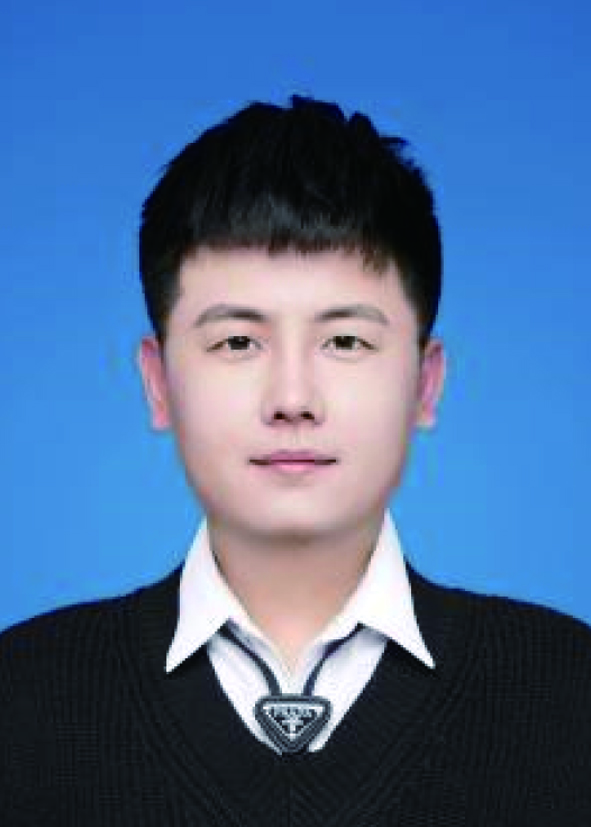 Xiangrong Pu is currently a Ph.D. student with the School of Microelectronics, Hefei University of Technology. His research interests include deep learning and mixed signal IC design.
Xiangrong Pu is currently a Ph.D. student with the School of Microelectronics, Hefei University of Technology. His research interests include deep learning and mixed signal IC design. Gang Liu is currently a professor at Shanghai Jiao Tong University. After receiving his Ph.D. degree from the National University of Singapore in 2010, he worked at the Nanyang Technological University, the National University of Singapore and the Chinese Academy of Sciences between January 2010 and November 2018. In December 2018, he joined the School of Electronic Information and Electrical Engineering, SJTU. His research interests focus on memristor devices and neuromrphic computing.
Gang Liu is currently a professor at Shanghai Jiao Tong University. After receiving his Ph.D. degree from the National University of Singapore in 2010, he worked at the Nanyang Technological University, the National University of Singapore and the Chinese Academy of Sciences between January 2010 and November 2018. In December 2018, he joined the School of Electronic Information and Electrical Engineering, SJTU. His research interests focus on memristor devices and neuromrphic computing.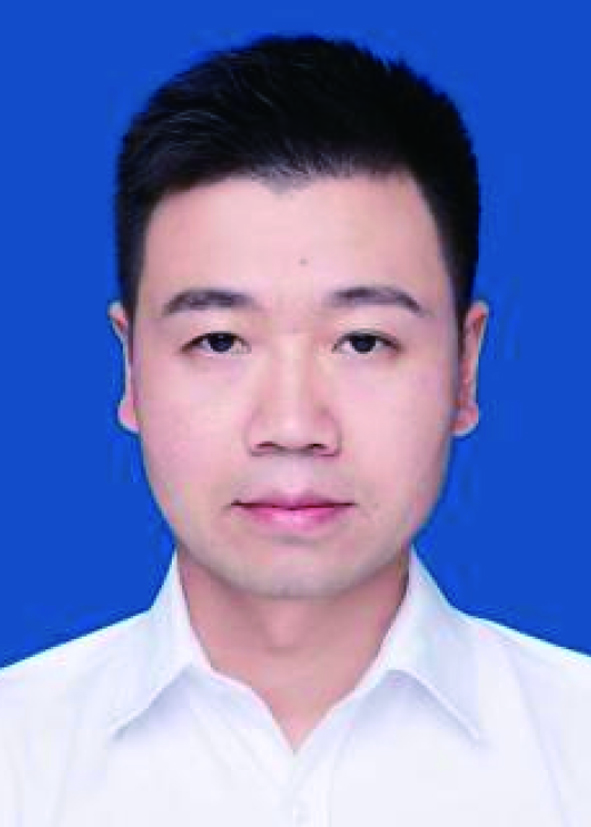 Zhang Zhang received the B.S. degree in electronic science and technology from the Hefei University of Technology, Hefei, China, in 2004, and the Ph.D. degree in microelectronics from Fudan University, Shanghai, China, in 2010. He was a Visiting Scholar with the Georgia Institute of Technology from 2016 to 2017. He is currently a Professor with the School of Microelectronics, Hefei University of Technology. His research interests include deep learning and mixed signal IC design.
Zhang Zhang received the B.S. degree in electronic science and technology from the Hefei University of Technology, Hefei, China, in 2004, and the Ph.D. degree in microelectronics from Fudan University, Shanghai, China, in 2010. He was a Visiting Scholar with the Georgia Institute of Technology from 2016 to 2017. He is currently a Professor with the School of Microelectronics, Hefei University of Technology. His research interests include deep learning and mixed signal IC design.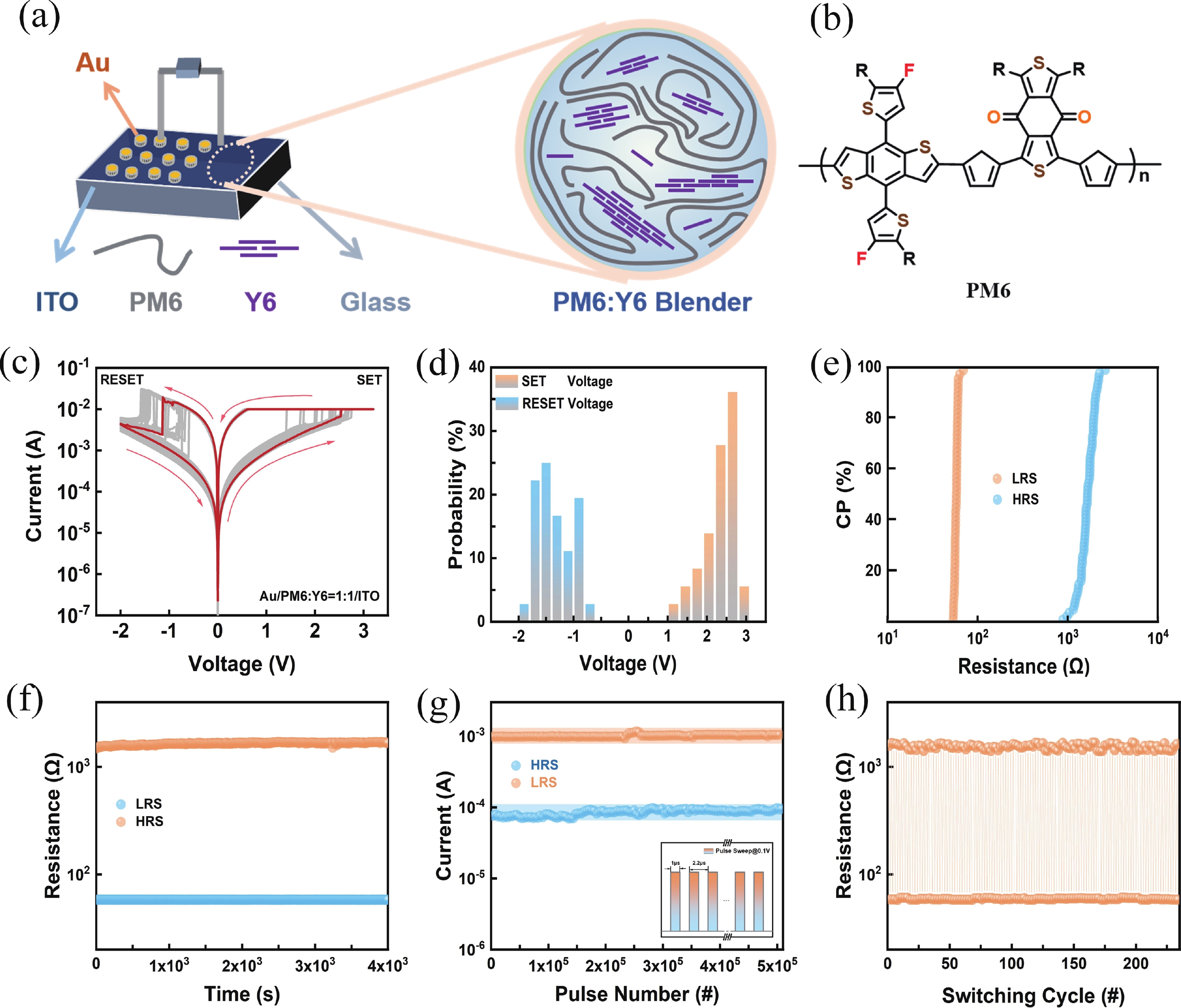
 DownLoad:
DownLoad:
